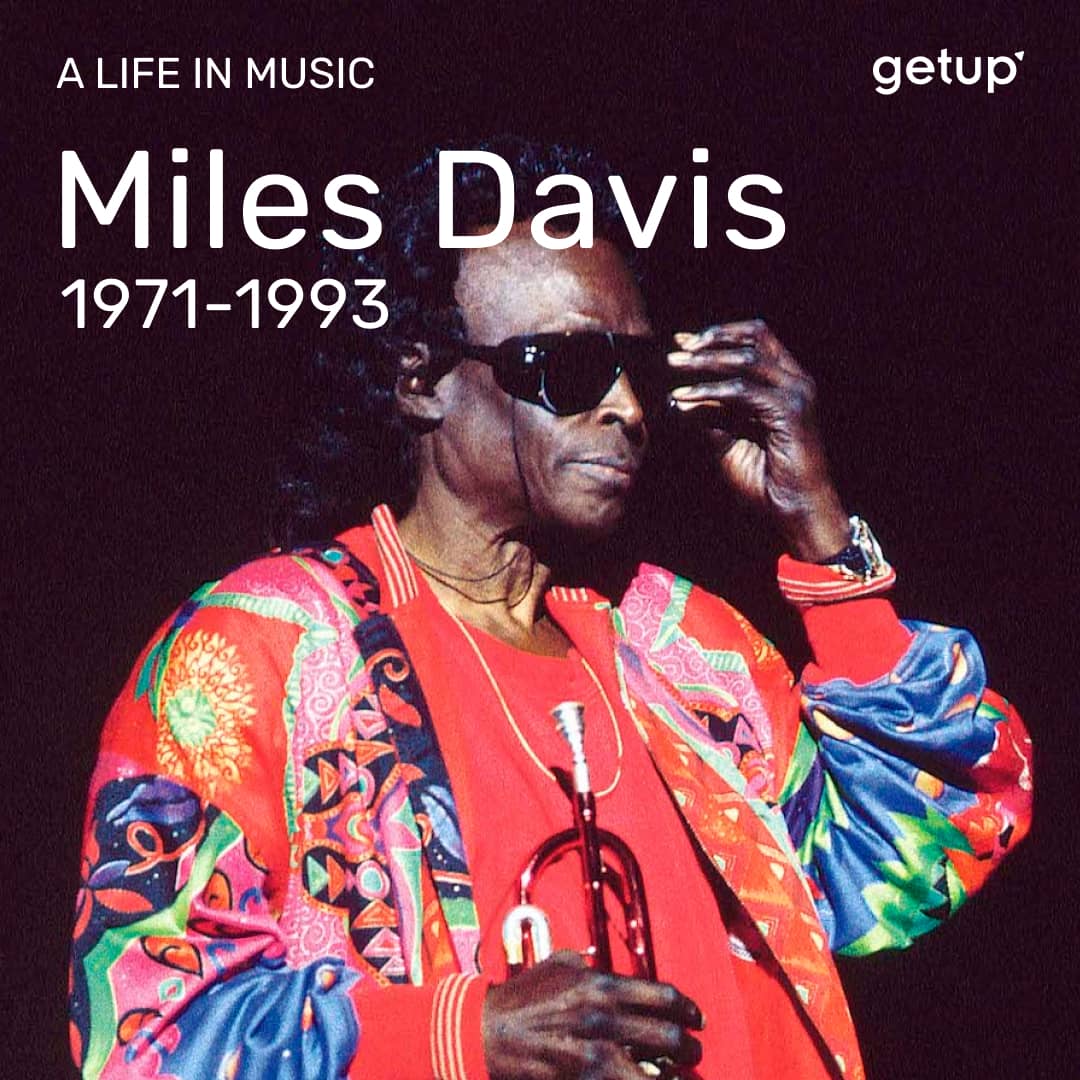In 1972, Miles Davis returned to the studio with Sly Stone, James Brown and Stockhausen in the lead and he recorded On the Corner (“Black Satin”). No more solos here. Everyone was concentrating on the ensemble, and in doing so created a sound like floating, raging magma. As saxophonist Dave Liebman recalls: ‘[Davis] plays a note, and everybody gathers on that note; or he plays something and lets the band go on. He says, “don’t go through with your idea, let the others finish it” [...] He creates an overall climate where each solo is just a small fragment of the bigger picture.’
Inspired by Hendrix, with whom he did not record, Davis plugged a wah-wah into his trumpet. This meant he had to change his whole playing style and play even fewer notes (“Ife”). It was no longer a question of phrases but of glissando notes, inarticulate ornaments, and a sort of incantation between cries and tears. Sometimes he would put down his trumpet to smash out some nightmarish funk notes on the keys (“Rated X”). The risk-taking was dizzying and he paid for it dearly: pneumonia, kidney stones, ulcers, tumours, a bad hip... He even came close to a heart attack. One time he crashed his Lamborghini and broke both his ankles. In June 1974 he played the lilting tune “He Loved Him Madly”, a funeral meditation that the trumpeter addressed to the deceased Duke, but perhaps also to himself...
After an insane tour immortalised by the albums Agharta and Pangaea, Miles broke down. ‘I had nothing left to say artistically and was spending all my time in hospitals. I started to see pity in the eyes of people who looked at me, like when I was a junkie. I preferred to give up the thing I loved most in the world, music.’ As Gil Evans recalled, ‘Miles’ sound comes to him very hard: it takes a lot of energy, jaw strength, and muscle to recreate his own sound all the time.’ For five years Davis locked himself away in his home, hooking up with sex workers and getting addicted to speedball (a mix of coke and heroin). It wasn’t until the 1980s that he re-emerged, encouraged by new followers of the ‘Controlled Freedom’ movement.
In order to warm himself up again he went on tour. The concerts were a huge success. After an episode with John Scofield, Miles played for Toto, flirted with Prince and played over some of Robert Irving’s electro arrangements. Bassist Marcus Miller also played. In essence, Miles followed the same path as during his electric period, but this time in a calmer, more inoffensive vein. While the dancey funk of Tutu got people moving at the time, today it seems rather cliched. As Frank Bergerot, one of Davis’ most reliable biographers, wrote: ‘He – who constantly played on the edge of the abyss – seemed to us to have given in to the rhythmic certainties of a music that was too well defined and succumbed to an “all-synth approach” without really solving the problem he himself raised several times: synthesizers sound “white”’.
It is true that the charm of his tone was occasionally able to blossom when the stylistic mawkishness of the eighties was kept in the background (“Time After Time”). Miles Davis’ sound has never gone away, even in death. The rapper Easy Mo Bee completed some unfinished tapes (“Doo-Bop”) after the trumpeter's death on 28th September 1991. And forty years later, others are still digging up recordings from the back of drawers that continue to add to the greatness of the man who left an unprecedented mark on music in the 20th century.



.jpg)
.jpg)
.jpg)